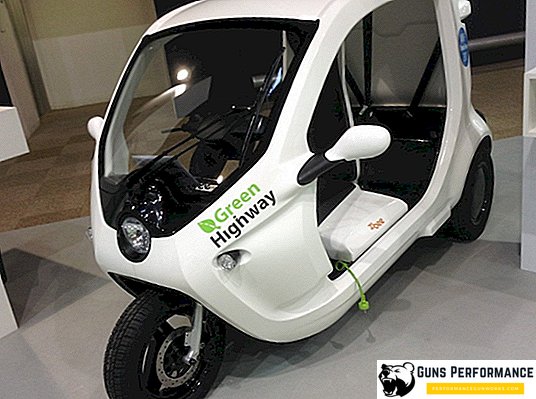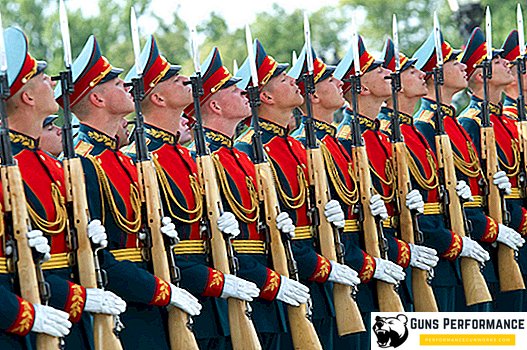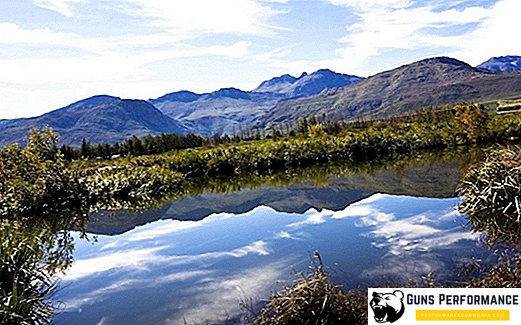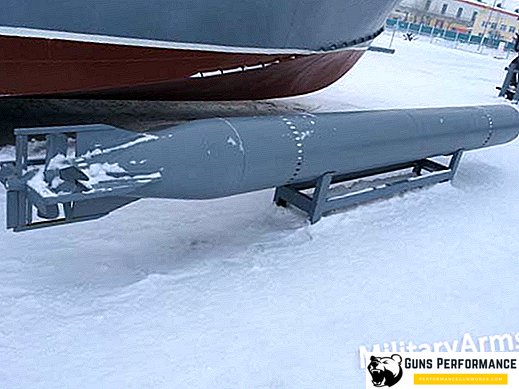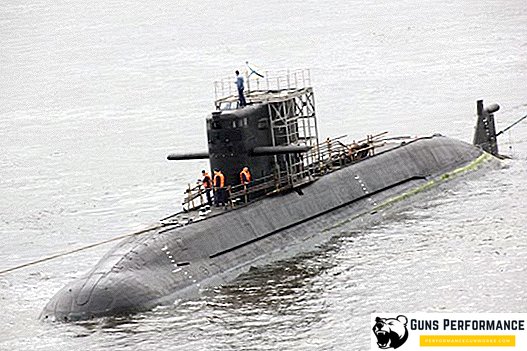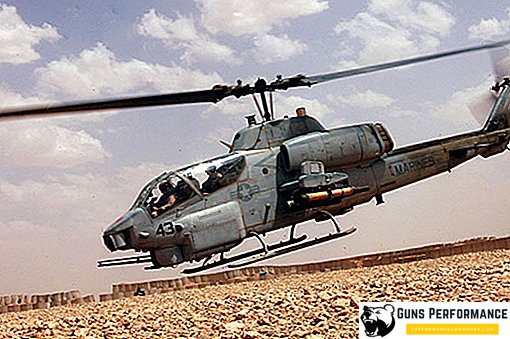The Soviet Katyusha rocket launcher is one of the most recognizable symbols of the Great Patriotic War. In terms of their popularity, the legendary Katyusha is not much inferior to the T-34 tank or the PPSh machine gun. Until now, it is unknown where this name came from (there are numerous versions), the Germans called these installations "Stalinist organs" and were terribly afraid of them.

"Katyusha" is the collective name of several rocket launchers of World War II at once. Soviet propaganda presented them as an exclusively domestic "know-how", which was not true. Work in this direction was carried out in many countries and the famous German six-barrel mortars - also MLRS, although a somewhat different design. The Americans and the British also used rocket artillery.
Nevertheless, the "Katyusha" has become the most efficient and most massive machine of this class of the Second World War. BM-13 - the real weapon of victory. She took part in all significant battles on the Eastern Front, clearing the way for infantry formations. The first salvo "Katyusha" sounded in the summer of 1941, and after four years of installation, the BM-13 had already fired on besieged Berlin.
A little history of the BM-13 "Katyusha"
After the end of the First World War, interest in solid-fuel powder rockets increased markedly, and designers in several countries engaged in development in this direction. By themselves, rocket rockets cannot be called something innovation; rather, it is a return to the “well forgotten old”. The fact is that powder rockets were not so rarely used until the middle of the XIX century, but as the rifled artillery developed, they for the time being lost their positions.

Several reasons contributed to the revival of interest in rocket weapons: first, more advanced types of gunpowder were invented, which made it possible to significantly increase the range of missiles; secondly, rockets perfectly suited as a weapon for combat airplanes; and thirdly, rockets could be used to deliver toxic substances.
The last reason was the most important: based on the experience of the First World War, the military had little doubt that the next conflict would not be complete without combat gases.
In the USSR, the creation of rocket weapons began with the experiments of two enthusiasts - Artemyev and Tikhomirov. In 1927, smokeless pyroxylin-trotyl powder was created, and in 1928 the first missile was developed, which was able to fly 1300 meters. At the same time, targeted development of missile weapons for aviation begins.
In 1933, experimental samples of two-caliber aircraft missiles appeared: the RS-82 and PC-132. The main disadvantage of the new weapons, which the military did not suit at all, was their low accuracy. The shells had a small plumage, which did not extend beyond its caliber, and a tube was used as a guide, which was very convenient. However, to improve the accuracy of the missiles, their plumage had to be increased and the development of new guides was underway.

In addition, pyroxylin-trotyl powder was not very well suited for the mass production of this type of weapon, so it was decided to use tubular nitroglycerin powder.
In 1937, tested new missiles with increased tail and new open rail-type guides. Innovations have significantly improved the accuracy of fire and increased the range of the rocket. In 1938, RS-82 and RS-132 rockets were put into service and began to be mass-produced.
In the same year, the designers were given a new task: to create a jet system for the ground forces, using the 132 mm caliber missile as a basis.
In 1939, the 132-mm high-explosive fragmentation projectile M-13 was ready; it had a more powerful warhead and increased flight range. It was possible to achieve such results by lengthening the ammunition.
In the same year the first jet-plant MU-1 was manufactured. Eight short guides were installed across the truck, sixteen missiles were attached to them in pairs. This design turned out to be quite unsuccessful, during the volley the machine was swinging heavily, which led to a significant decrease in the accuracy of the battle.
In September 1939, began testing the new jet propulsion system - MU-2. The basis for it was the ZiS-6 three-axle truck, this machine provided a high maneuverability to the combat complex, allowing you to quickly change positions after each volley. Now guides for missiles were placed along the car. For one volley (about 10 seconds), the MU-2 fired sixteen shells, the weight of the installation with ammunition was 8.33 tons, the firing range exceeded eight kilometers.

With this design of the guides, the swinging of the car during the volley was minimal, in addition, two jacks were installed at the rear of the car.
In 1940, state tests of the MU-2 were conducted, and it was put into service under the designation "BM-13 jet mortar".
The day before the start of the war (June 21, 1941), the USSR government decided to mass-produce BM-13 combat complexes, their ammunition and the formation of special units for their use.
The first experience of the BM-13 at the front showed their high efficiency and contributed to the active production of this type of weapon. During the war, "Katyusha" was produced by several factories, mass production of ammunition was arranged for them.
Artillery units armed with BM-13 installations were considered elite, immediately after formation they received the name of the guards. The reactive systems BM-8, BM-13 and others were officially called "Guards mortars".
Application of BM-13 "Katyusha"
The first combat use of rocket launchers took place in mid-July 1941. The Germans occupied Orsha, a large junction station in Belarus. It accumulated a large number of military equipment and manpower of the enemy. It was for this purpose that two volleys of the battery of jet installations (seven units) of Captain Flerov produced.

As a result of the actions of the artillerymen, the railway junction was practically wiped off the face of the earth, the Nazis suffered severe losses in people and equipment.
"Katyusha" was used in other sectors of the front. The new Soviet weapon was a very unpleasant surprise for the German command. A particularly strong psychological effect on the Wehrmacht’s military personnel was the pyrotechnic effect of the use of projectiles: after the Katyush volley, literally everything that was capable of burning was burning. This effect was achieved through the use of trotyl drafts, which in the explosion formed thousands of burning fragments.
Rocket artillery was actively used in the Battle of Moscow, the "Katyusha" destroyed the enemy at Stalingrad, they were tried to use as an anti-tank weapon on the Kursk Bulge. To do this, special recesses were made under the front wheels of the car, so the Katyusha could fire direct fire. However, the use of BM-13 against tanks was less effective, since the M-13 missile was a high-explosive fragmentation, rather than armor-piercing. In addition, the "Katyusha" never differed high accuracy of fire. But if her projectile hit the tank - all attachments of the machine were destroyed, the turret was often jammed, and the crew received the strongest concussion.
The rocket launchers were used with great success until the very Victory, they took part in the storming of Berlin and other operations at the final stage of the war.
In addition to the renowned MLRS BM-13, there was a BM-8 rocket launcher that used 82 mm rockets, and over time heavy rocket systems appeared that launched 310 mm rockets.

During the Berlin operation, Soviet soldiers actively used the experience of street fighting, which they gained during the capture of Poznan and Königsberg. It consisted in firing single heavy missiles M-31, M-13 and M-20 direct fire. Created a special assault group, which included an electrician. The rocket was launched from machine-guns, wooden stoppers or simply from any flat surface. The hit of such a projectile could well destroy the house or is guaranteed to suppress the enemy firing point.
During the war years, about 1,400 installations of the BM-8, 3400 of the BM-13 and 100 of the BM-31 were lost.
However, the history of BM-13 did not end there: in the early 1960s, the USSR supplied these installations to Afghanistan, where they were actively used by government troops.
Device BM-13 "Katyusha"
The main advantage of the rocket launcher BM-13 is its extreme simplicity both in production and in use. The artillery part of the installation consists of eight guides, the frame on which they are located, turning and lifting mechanisms, sighting devices and electrical equipment.
The guides were a five-meter I-beam with special linings. In the breech of each of the guides was installed locking device and elektrozapal with which the shot was made.

The guides were fixed on a pivoting frame, which, with the help of the simplest lifting and pivoting mechanisms, ensured vertical and horizontal guidance.
Each "Katyusha" was equipped with an artillery sight.
The crew of the car (BM-13) consisted of 5-7 people.
The M-13 projectile consisted of two parts: a combat and a rocket propellant engine. The warhead, in which there was an explosive and a contact fuse, is very similar to the warhead of a conventional high-explosive fragmentation artillery shell.
The powder engine of the M-13 projectile consisted of a chamber with a powder charge, a nozzle, a special grille, stabilizers and a fuse.
The main problem faced by the developers of rocket systems (and not only in the USSR) was the low accuracy of the accuracy of missiles. To stabilize their flight, the designers went two ways. German rocket projectiles of six-barrel mortars rotated in flight due to obliquely located nozzles, and flat stabilizers were installed on Soviet PCs. To make the projectile more accurate, it was necessary to increase its initial speed, for this purpose, the guides on the BM-13 received a greater length.

The German method of stabilization made it possible to reduce the dimensions of both the projectile itself and the weapon from which it was released. However, this significantly reduced the firing range. Although, it should be said that German six-barrel mortars were more precisely “Katyush”.
The Soviet system was simpler and allowed firing at significant distances. Later on installations began to use spiral guides, which further increased the accuracy.
Modifications "Katyusha"
During the war years, numerous modifications were made to both the rocket launchers and their ammunition. Here are just some of them:
BM-13-CH - this installation had spiral guides, which betrayed the projectile rotational motion, which significantly increased its accuracy.

BM-8-48 - this jet installation used shells of 82 mm caliber and had 48 guides.


BM-31-12 - this rocket launcher used 310 mm caliber shells for firing.

The 310 mm rocket projectiles were originally used for firing from the ground, only after a self-propelled installation appeared.
The first systems were created on the basis of the ZIS-6, then they were most often installed on machines obtained under "lend-lease". It must be said that with the start of the "Lend-Lease", only foreign machines were used to create rocket launchers.
In addition, rocket launchers (with M-8 projectiles) were mounted on motorcycles, snowmobiles, armored boats. Guides were installed on railway platforms, T-40, T-60, KV-1 tanks.
In order to understand how massive the Katyushi weapons were, it’s enough to cite two figures: from 1941 to the end of 1944, the Soviet industry manufactured 30 thousand launchers of various types and 12 million rounds for them.
During the war years, several types of 132 mm caliber missiles were developed. The main directions of modernization was to increase the accuracy of fire, increase the range of the projectile and its power.
Advantages and disadvantages of the rocket launcher BM-13 "Katyusha"
The main advantage of rocket launchers was the large number of shells, which they fired in one volley. If several MLRS worked on the same area at once, the destructive effect increased due to the interference of shock waves.
Easy to use. The Katyushas were notable for their extremely simple design, the sights of this installation were also simple.
Low cost and ease of manufacture. During the war, the production of rocket launchers was established at dozens of factories. There was no particular difficulty in the production of ammunition for these complexes. Especially eloquent is the comparison of the cost of the BM-13 and conventional artillery guns of similar caliber.

Installation mobility. The time of one BM-13 salvo is about 10 seconds, after the salvo the car left the firing line, without being substituted for the enemy's return fire.
However, these weapons had flaws, the main thing was the low accuracy of the shooting due to the large dispersal of shells. This problem was partially solved by the BM-13SN, but it has not been finally resolved for modern MLRS.
Insufficient explosive action of M-13 projectiles. The Katyusha was not very effective against long-term fortifications and armored vehicles.
Short firing range in comparison with the barrel artillery.
Large consumption of gunpowder in the manufacture of rockets.
Strong smoke during a salvo, which served as a unmasking factor.
The high center of gravity of the BM-13 installations led to frequent tipping of the machine during the march.

Technical characteristics of "Katyusha"
Characteristics of the combat vehicle
| Chassis | ZIS-6 |
| Number of guides | 16 |
| Length of guides, m | 5 |
| Vertical angle, hail | +4… +45 |
| Horizontal guidance angle | -10… +10 |
| Length in the stowed position, m | 6,7 |
| Width, m | 2,3 |
| Height in the stowed position, m | 2,8 |
| Weight in traveling position without shells, kg | 7200 |
| Transfer time from traveling to combat, min. | 2 |
| Loading time, min | 5 |
| Full salvo time, with | 8 |
The characteristics of the missile M-13
| Caliber, mm | 132 |
| Span of stabilizer blades, mm | 300 |
| Length mm | 1465 |
| Weight, kg: | |
| finally equipped projectile | 42,36 |
| equipped head end | 21,3 |
| bursting charge | 4,9 |
| equipped jet engine | 20,8 |
| Projectile velocity, m / s: | |
| muzzle (when coming off the guide) | 70 |
| maximum | 355 |
| The length of the active part of the trajectory, m | 125 |
| Maximum firing range, m | 8470 |



